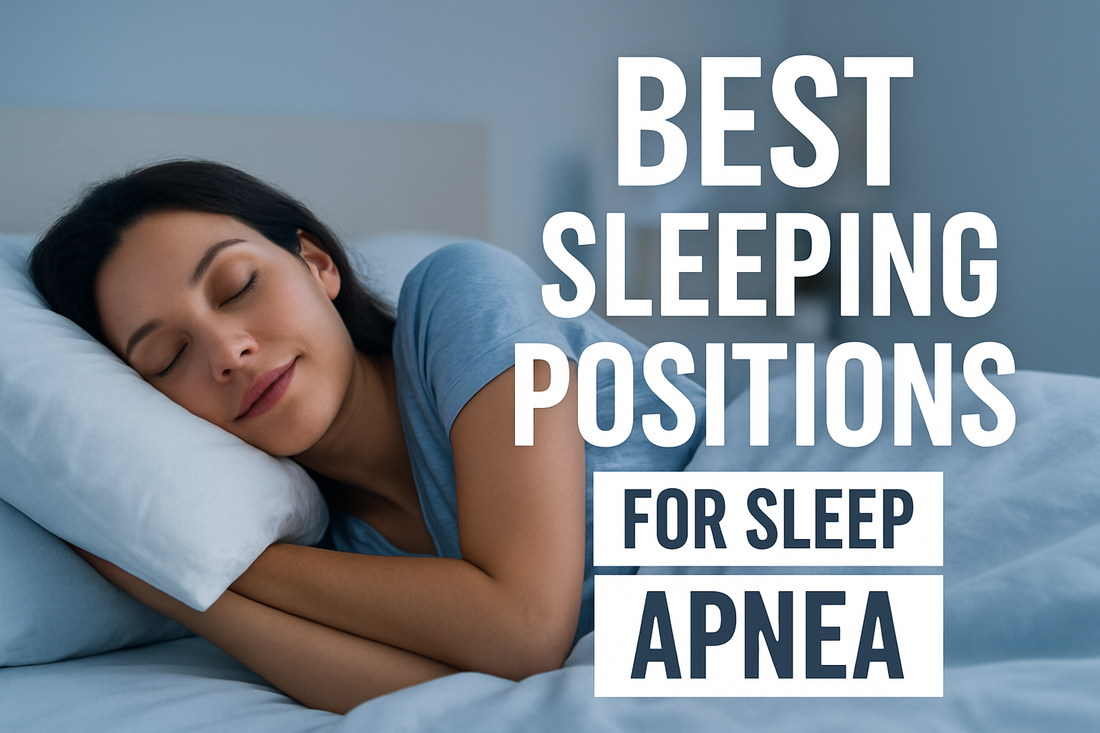
Best Sleeping Positions for People with Sleep Apnea
Share
Introduction
Sleep apnea affects millions worldwide, causing breathing interruptions, loud snoring, and restless nights. While CPAP therapy is one of the most effective treatments, many people don’t realize that their sleeping position can also make a huge difference. The way you sleep can either worsen your symptoms or help you breathe easier through the night.
Why Does Sleep Position Matter?
When you sleep, your body relaxes, and gravity takes over. Depending on how you lie down, your airway may stay open—or collapse partially—leading to snoring and apnea episodes. The right position helps keep the airway clear, reduces blockages, and allows smoother airflow.
Best Sleep Positions for Sleep Apnea
1. Side Sleeping (Most Recommended)
Sleeping on your side is widely considered the best position for people with sleep apnea.
- Keeps the airway more open
- Reduces snoring and pauses in breathing
- Can improve oxygen flow
Pro tip: Sleeping on your left side is even more beneficial as it also helps circulation and digestion. If you find it hard to stay in this position, try using a body pillow for extra support.
2. Sleeping with Head Elevated
Keeping your head slightly elevated can reduce airway obstruction. Using a wedge pillow or adjustable bed can help:
- Prevent soft tissues from collapsing into the airway
- Reduce acid reflux, which is common in people with sleep apnea
- Make breathing easier throughout the night
Positions to Avoid
Sleeping on Your Back
This is the worst position for sleep apnea. Gravity causes the tongue and throat tissues to fall backward, narrowing the airway and worsening snoring and apnea events.
Sleeping on Your Stomach
Although stomach sleeping may reduce snoring for some, it often puts strain on the neck and spine, which can cause discomfort and poor-quality sleep.
Additional Tips for Better Sleep with Sleep Apnea
- Stick to side sleeping using supportive pillows.
- Maintain a healthy weight to reduce airway pressure.
- Use CPAP therapy consistently if prescribed by your doctor.
- Establish a bedtime routine to improve sleep quality.
- Avoid alcohol and heavy meals before bed, as they can relax airway muscles.
Conclusion
Your sleeping position has a direct impact on the severity of sleep apnea symptoms. Side sleeping—especially on your left side—and keeping your head elevated are the most effective positions to promote better airflow and restful nights. By combining good sleep posture with consistent CPAP therapy, you can enjoy deeper, healthier sleep.
👉 For more sleep health tips and high-quality CPAP accessories, visit CPAPsavers.com and follow us on social media.
